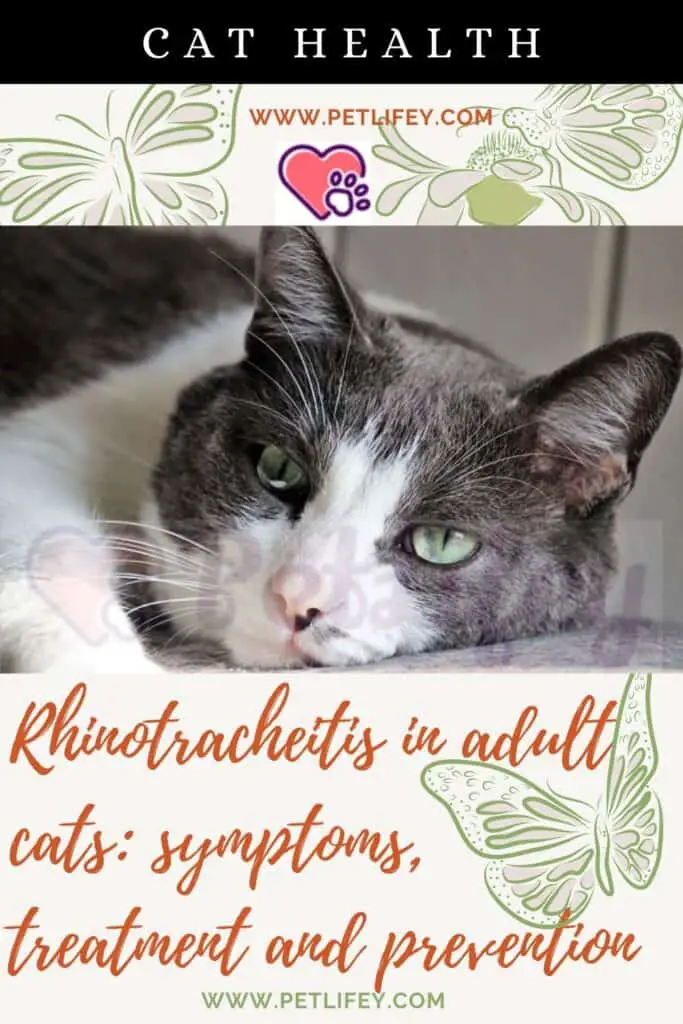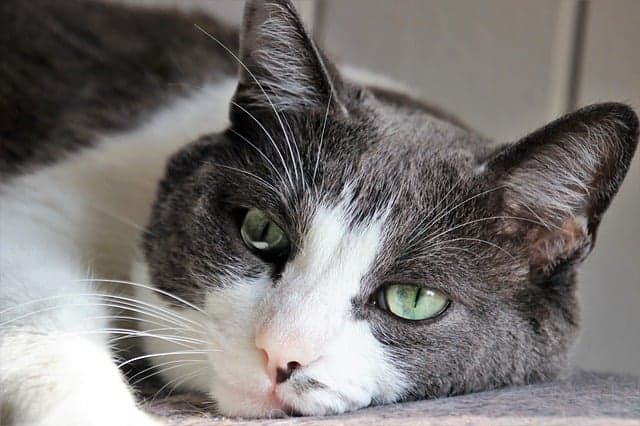
Rhinotracheitis in adult cats, a very contagious pathological condition. Let’s try to understand the different causes of contagion, all the symptoms, the treatment and how to prevent the animal.
Taking care of your furry pet is a challenge every day. Each owner does a lot to try to protect him from diseases or physical ailments typical of his nature but, often, cats can have the misfortune of coming into contact with other infected furry ones and risk getting sick outside the home, due to an infection. Let’s see, together, what exactly is rhinotracheitis in the adult cat and how we can do to treat or prevent it in our feline.
Rhinotracheitis in adult cats: causes and symptoms
Rhinotracheitis in adult cats is a viral infectious disease and is highly contagious. It is a disease that can affect both kittens and adult cats. Let’s read more about what it consists of and how it affects the animal.
A fairly common viral disease in cats, more in kittens than in adults, is rhinotracheitis. This condition, known as the cat cold, can affect the feline regardless of race, gender and age. Let’s try to understand how it can be contracted.
Rhinotracheitis is caused by feline herpesvirus or calicivirus, which can mainly affect young unvaccinated cats and who come into contact with other contaminated furry cats, when exposed in the external environment, in a hot and humid climate, contagious especially in places such as feline colonies.
This disease affects the upper respiratory tract of the animal. The adult cat with a weakened immune system is not immune to it and the means of contagion occurs through secretions, but it is not transmitted to humans. But what are the symptoms caused by this disease? Let’s see them together.
The symptoms of rhinotracheitis in the adult cat are typically respiratory: the cat sneezes and has a lack of appetite, fever and nasal and ocular discharge. Other symptoms that are typical in the furry are:
- Nasal discharge
- Cough in cats
- Difficulty in ingesting water and food
- Decreased feline sense of smell
- Secondary infections.
It can happen that the cat is also infected with calicivirus and, in this case, another symptom present is mouth sores, with consequences for the pain that also cause drowsiness and fever in the cat. These are serious symptoms that, in the long run, can lead to dehydration in cats, a dangerous condition that, if left untreated, can be fatal for them.
We will read further on how it is possible to prevent and treat the disease.
Cat and rhinotracheitis: treatment and prevention

As we have read above, the strong symptoms of rhinotracheitis in adult cats can lead to very dangerous consequences for their health and their life. It is necessary to intervene promptly with the necessary treatment and always try to do prevention. Let’s read how to act.
Once the diagnosis is made after a thorough and precise visit to your vet, the treatment for rhinotracheitis in adult cats is chosen based on the general health situation in which they are found.
The first treatment to cure the cat consists in rehydration, in helping him to eat and starting a treatment of drugs and antibiotics, eye drops, supplements and vitamins, aerosols, to clear the respiratory tract, making him also return his appetite.
Forcing him to eat is essential, perhaps offering him semi-liquid food that he will be able to digest more easily. In cases of very severe rhinotracheitis, intravenous rehydration and admission to a clinic will be necessary. If, then, your cat suffers a lot from the eyes, it is advisable to treat the area several times a day with antibiotic eye drops.
The importance of prevention
We are talking about a very contagious pathology in the feline, which is why attention to hygiene is essential. A form of high prevention is to follow the cat’s vaccination schedule correctly.
It is advisable to take extra care of cats with weakened immune systems, puppies and older cats who have suffered from other diseases. It is also necessary to pay close attention to the daily nutrition and hydration of the feline, to make sure that it is always well fed and that it lives peacefully at home.
The furry’s eyes are particularly sensitive and are attacked by rhinotracheitis: thick crusts may form around the eyes, which must be cleaned with a cotton swab or with a damp gauze. Even if the cat does recover, unfortunately this pathology can recur in him during his life.
Once healed, the cat can continue to have sequelae of the disease and attention should be paid to every sign. For any doubts concerning your situation, it is always advisable to consult your trusted veterinarian for further checks and opinions.






